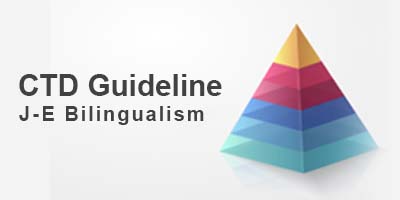薬審第443号
平成8年7月2日
ICH Harmonised Tripartite Guideline
Recommended for Adoption at Step 4 of the ICH Process on 27 October 1994 by the ICH Steering Committee
トキシコキネティクス(毒性試験における全身的暴露の評価)に関するガイダンスについて
NOTE FOR GUIDANCE ON TOXICOKINETICS: THE ASSESSMENT OF SYSTEMIC EXPOSURE IN TOXICITY STUDIES
1. はじめに
本文書はヒト用医薬品の開発におけるトキシコキネティクス(以下TK と略す)に関するガイダンスである。
TK とは,「医薬品の開発における毒性試験の不可欠な構成要素として,或いは特にデザインされた補助的試験として,全身的曝露を評価するために,薬物動態データを得ること」と定義する。これらの資料は毒性知見の解釈及び臨床上の安全性との関連についての解釈に用いられる(他の用語の定義については,注1を参照)。
本文書は,TK の意義と適用に関する見解を示すとともに,TK 試験計画立案のための手引きとして作成された。また,薬物動態学的方法を毒性試験の中に組み込む必要性を強調している。これは毒性所見を解釈するのに役立つとともに,合理的な試験計画の立案に資するものである。
通常,TK は毒性試験の中に組み込まれるものであり,そのようなTK を本文書中ではコンコミタントTK(concomitant toxicokinetics)」と呼ぶ(注1)。一方,TK データは毒性試験と類似した条件で行われる補助的な試験からも得ることができる。
TK において適切なパラメーターを測定することにより,試験動物種における反復投与時の薬物動態データを得ることができる。従って,適切な試験計画を立てることより,試験の重複を避け,必要な動物数を減らせる。
非臨床薬物動態試験において検討される項目のいくつかは毒性所見を解釈する上で有用な場合がある。一方,TK データは毒性試験という条件下での被験物質の動態に焦点を合わせるものである。
TK は非臨床試験プログラムの不可欠な一構成成分であり,ヒトにおける安全性を評価する一環としての毒性試験の理解や臨床試験データとの比較に役立つことから,得られた毒性知見の価値を高めるものである。TKは毒性試験を構成する一部であること,また非臨床試験と臨床試験との橋渡し的性質を有することから,主として毒性試験の結果を解釈することに焦点があてられる。被験物質の基礎的な薬物動態学的パラメーターを明らかにすることを目的としたものではない。
医薬品の開発は,非臨床試験と臨床試験との間の不断のフィードバックを要する動的な過程であるので,TKの適用に対しては,細部にわたって手順を固定化することは勧められない。TK データを収集することを必要としない試験もある。どのような場合にTK データが有用であるかは科学的に判断すべきである。個々の毒性試験におけるTK データの必要性及び曝露評価の範囲は,危険性と安全性の評価に十分な情報が得られるように,柔軟で段階的な取り組みと状況に応じた意志決定に基づくべきである。
1. Introduction
This Note for Guidance concerns toxicokinetics only with respect to the development of pharmaceutical products intended for use in human subjects.
In this context, toxicokinetics is defined as the generation of pharmacokinetic data, either as an integral component in the conduct of non-clinical toxicity studies or in specially designed supportive studies, in order to assess systemic exposure. These data may be used in the interpretation of toxicology findings and their relevance to clinical safety issues (see Note 1 for definitions of other terms used in this document).
The Note for Guidance has been developed in order to provide an understanding of the meaning and application of toxicokinetics and to provide guidance on developing test strategies in toxicokinetics. The guidance highlights the need to integrate pharmacokinetics into toxicity testing, which should aid in the interpretation of the toxicology findings and promote rational study design development.
Toxicokinetic measurements are normally integrated within the toxicity studies and as such are described in this document as ‘concomitant toxicokinetics’ (Note 1). Alternatively, data may be generated in other supportive studies conducted by mimicking the conditions of the toxicity studies.
Toxicokinetic procedures may provide a means of obtaining multiple dose pharmacokinetic data in the test species, if appropriate parameters are monitored, thus avoiding duplication of such studies; optimum design in gathering the data will reduce the number of animals required.
Various components of the total non-clinical pharmacokinetics and metabolism programme may be of value in contributing to the interpretation of toxicology findings. However, the toxicokinetic data focus on the kinetics of a new therapeutic agent under the conditions of the toxicity studies themselves.
Toxicokinetics is thus an integral part of the non-clinical testing programme; it should enhance the value of the toxicological data generated, both in terms of understanding the toxicity tests and in comparison with clinical data as part of the assessment of risk and safety in humans. Due to its integration into toxicity testing and its bridging character between non-clinical and clinical studies, the focus is primarily on the interpretation of toxicity tests and not on characterising the basic pharmacokinetic parameters of the substance studied.
As the development of a pharmaceutical product is a dynamic process which involves continuous feed-back between non-clinical and clinical studies, no rigid detailed procedures for the application of toxicokinetics are recommended. It may not be necessary for toxicokinetic data to be collected in all studies and scientific judgement should dictate when such data may be useful. The need for toxicokinetic data and the extent of exposure assessment in individual toxicity studies should be based on a flexible step-by-step approach and a case-by-case decision making process to provide sufficient information for a risk and safety assessment.
2. トキシコキネティクス(TK)の目的及び測定されるパラメーター
TK の主たる目的は以下のとおりである。
-動物において得られた全身的曝露,およびそれと毒性試験の用量及び時間経過との関係を記述すること。
また,TK の二次的な目的は以下のとおりである。
-毒性試験の中で得られた曝露を毒性知見と関連づけ,またこれらの知見と臨床上の安全性との関連性評価に役立てること。
-非臨床毒性試験における動物種と投与法(注2)の選択をサポート(注1)すること。
-毒性知見と合わせて,以後の非臨床毒性試験の計画に役立つ情報を提供すること。
これらの目的は,個々の試験期間中の適切な時点で実施される測定結果から一種ないし数種の薬物動態パラメータ(注3)を求める事によって達成できるであろう。通常,これらは血漿(あるいは全血または血清)中の未変化体あるいは代謝物の濃度測定として行われるが,状況に応じて適宜選択すべきである。血漿(あるいは全血あるいは血清)中でのAUC, Cmax,及びC(time)(注3)は,TK 試験において曝露を評価するために最も一般的に使用されるパラメーターである。化合物によっては(血漿蛋白との)非結合型薬物濃度に基づいて曝露量を計算することの方が適切な場合もある。
これらのデータは毒性試験に用いた全ての動物から入手してもよいし,あるいは代表となりうる群やサテライト群の動物から得てもよい(注1参照)。
TK 情報によってサポートされるのが有効と思われる毒性試験には,単回及び反復投与毒性試験,生殖毒性試験,遺伝毒性試験,及びがん原性試験が含まれる。また,TK 情報は臨床投与経路の変更に伴う諸問題の考察にも有用であろう。
2. The objectives of toxicokinetics and the parameters which may be determined
The primary objective of toxicokinetics is:
– to describe the systemic exposure achieved in animals and its relationship to dose level and the time course of the toxicity study.
Secondary objectives are:
– to relate the exposure achieved in toxicity studies to toxicological findings andcontribute to the assessment of the relevance of these findings to clinical safety.
– to support (Note 1) the choice of species and treatment regimen in non-clinical toxicity studies.
– to provide information which, in conjunction with the toxicity findings, contributes to the design of subsequent non-clinical toxicity studies.
These objectives may be achieved by the derivation of one or more pharmacokinetic parameters (Note 2) from measurements made at appropriate time points during the course of the individual studies. These measurements usually consist of plasma (or whole blood or serum) concentrations for the parent compound and/or metabolite(s) and should be selected on a case-by-case basis. Plasma (or whole blood or serum) AUC, Cmax and C(time) (Note 2) are the most commonly used parameters in assessing exposure in toxicokinetics studies. For some compounds it will be more appropriate to calculate exposure based on the (plasma protein) unbound concentration.
These data may be obtained from all animals on a toxicity study, in representative subgroups, in satellite groups (see 3.5 and Note 1) or in separate studies.
Toxicity studies which may be usefully supported by toxicokinetic information include single and repeated-dose toxicity studies, reproductive, genotoxicity and carcinogenicity studies. Toxicokinetic information may also be of value in assessing the implications of a proposed change in the clinical route of administration.
3. 一般原則
3.1 緒言
以下の節に,個々の試験の計画において考慮すべきいくつかの基本原則を示す。
Good Laboratory Practice(GLP)を適用して実施される毒性試験については,そのコンコミタントTK もGLPに適合しなければならないことに留意すべきである。毒性試験を忠実に再現した条件下で特定のデータを得るために,後追い的に計画されるTK 試験も,それが安全性評価に必要な場合には,GLP に適合しなければならない。
3. General principles to be considered
3.1 Introduction
In the following paragraphs some general principles are set out which should be taken into consideration in the design of individual studies.
It should be noted that for those toxicity studies whose performance is subject to Good Laboratory Practice (GLP) the concomitant toxicokinetics must also conform to GLP. Toxicokinetic studies retrospectively designed to generate specific sets of data under conditions which closely mimic those of the toxicity studies should also conform to GLP when they are necessary for the evaluation of safety.
3.2 曝露の定量的評価
全身的曝露を定量的に測定することは,試験動物種に対する負荷の評価を可能にし,また動物種,用量,性別での毒性の相違点及び類似点を説明するのに役立つ。曝露は,未変化体あるいは代謝物の血漿(血清あるいは血液)中濃度,あるいはAUC によって表すことができる。場合によっては組織内濃度を測定するような試験が計画されることもあろう。毒性試験の立案においては,(予想或いは確立された)治療用量でのヒトにおける曝露量及び用量依存性を考慮に入れて,動物を用いた毒性試験においていくつかの用量レベルで適切な曝露を達成すべく計画すべきである。当該物質に対する質的あるいは量的な薬力学的(pharmacodynamics)種差が存在する可能性も考慮すべきである。
薬力学的作用又は毒性も曝露を裏づける証拠となりうる。薬物動態パラメータの代わりになる場合もある。
毒性試験のTK 的なモニタリングあるいはプロファイリングを行い,試験期間中に達成された曝露レベルを立証すべきである。これはまた,曝露量が用量に対して非線形的に変化していないか毒性学者に注意させるのに役立つであろう(注4)。TK 情報により,単純な用量/体重比(又は体表面積比)に比べてより的確な種間比較が可能となるであろう。
3.2 Quantification of exposure
The quantification of systemic exposure provides an assessment of the burden on the test species and assists in the interpretation of similarities and differences in toxicity across species, dose groups and sexes. The exposure might be represented by plasma (serum or blood) concentrations or the AUCs of parent compound and/or metabolite(s). In some circumstances, studies may be designed to investigate tissue concentrations. When designing the toxicity studies, the exposure and dose-dependence in humans at therapeutic dose levels (either expected or established), should be considered in order to achieve relevant exposure at various dose levels in the animal toxicity studies. The possibility that there may be species differences in the pharmacodynamics of the substance (either qualitative or quantitative) should also be taken into consideration.
Pharmacodynamic effects or toxicity might also give supporting evidence of exposure or even replace pharmacokinetic parameters in some circumstances.
Toxicokinetic monitoring or profiling of toxicity studies should establish what level of exposure has been achieved during the course of the study and may also serve to alert the toxicologist to non-linear, dose-related changes in exposure (Note 3) which may have occurred. Toxicokinetic information may allow better interspecies comparisons than simple dose/body weight (or surface area) comparisons.
3.3 適切な試料採取時点
コンコミタントTK 試験においては必要な頻度で,体液の採取時点を設定すべきであるが,試験の正常な遂行を妨げるような,また動物に対し過度の生理的ストレスを負荷するような頻度にはするべきではない(注5)。
各試験において,試料採取時点の数は曝露評価に充分であるか否か,という観点から判断すべきである(3.2参照)。初期の毒性試験,予備又は用量設定試験,同種類の動物実験あるいは信頼性のある外挿が可能な他の実験系を用いた個別の試験から収集した動態データに基づき判断すべきである。
3.3 Justification of time points for sampling
The time points for collecting body fluids in concomitant toxicokinetic studies should be as frequent as is necessary, but not so frequent as to interfere with the normal conduct of the study or to cause undue physiological stress to the animals (Note 4). In each study, the number of time points should be justified on the basis that they are adequate to estimate exposure (see 3.2). The justification should be based on kinetic data gathered from earlier toxicity studies, from pilot or dose range-finding studies, from separate studies in the same animal model or in other models allowing reliable extrapolation.
3.4 適切な曝露のための用量設定における考慮点
毒性試験における用量設定は,主に試験動物種における毒性知見及び薬力学的知見によって決定される。しかし,以下のTK の原則も用量の設定に寄与するであろう。
3.4.1 低用量
いかなる毒性試験においても,低用量,望ましくは無毒性量(注6)での曝露量が,患者で予想(または確認)された最大曝露量と同等か或いはそれを若干越えることが理想的である。但し,この目標を達成できない場合があること,また,低用量を毒性知見を基に決定しなければならない場合がしばしばあることが認識されている。しかし,その場合でも全身的曝露を測定すべきである。
3.4.2 中間用量
通常,中間用量における曝露量は,毒性試験の目的に応じて,低(又は高)用量での曝露量の適当な倍数(又は分数)とすべきである。
3.4.3 高用量
通常,毒性試験の高用量は,毒性知見を基に決定される。但し,用いられた試験用量における曝露は測定すべきである。
未変化体または代謝物の曝露量が吸収過程で制約されていることをTK データが示している場合は(注7),その物質の最大曝露をもたらす用量を最高用量としても良い(他に用量を制限する要因がない場合,注8)。
いずれの毒性試験においても,選択された用量で動態が非線形となった場合は毒性所見の解釈には極めて入念な注意が必要である(注4)。しかしながら,動態の非線形性は必ずしも毒性試験の用量限界を示すものではなく,また得られた毒性所見の妥当性を否定するものでもない。TK はこのような状況での用量と曝露量との関係の評価に非常に役に立つ。
3.4 Contribution to the setting of dose levels in order to produce adequate exposure
The setting of dose levels in toxicity studies is largely governed by the toxicology findings and the pharmacodynamic responses of the test species. However, the following toxicokinetic principles may contribute to the setting of the dose levels.
3.4.1 Low dose levels
At the low dose, preferably a no-toxic-effect dose level (Note 5), the exposure in the animals of any toxicity study should ideally equal or just exceed the maximum expected (or known to be attained) in patients. It is recognised that this ideal is not always achievable and that low doses will often need to be determined by considerations of toxicology; nevertheless, systemic exposure should be determined.
3.4.2 Intermediate dose levels
Exposure at intermediate dose levels should normally represent an appropriate multiple (or fraction) of the exposure at lower (or higher) dose levels dependent upon the objectives of the toxicity study.
3.4.3 High dose levels
The high dose levels in toxicity studies will normally be determined by toxicological considerations. However, the exposure achieved at the dose levels used should be assessed.
Where toxicokinetic data indicate that absorption of a compound limits exposure to parent compound and/or metabolite(s) (Note 6), the lowest dose level of the substance producing the maximum exposure should be accepted as the top dose level to be used (when no other dose-limiting constraint applies, Note 7).
Very careful attention should be paid to the interpretation of toxicological findings in toxicity studies (of all kinds) when the dose levels chosen result in non-linear kinetics (Note 3). However, non-linear kinetics should not necessarily result in dose limitations in toxicity studies or invalidate the findings; toxicokinetics can be very helpful in assessing the relationship between dose and exposure in this situation.
3.5 曝露評価の範囲
毒性試験においては,安全性評価に資するデータを提供するように,適切な数の動物及び用量群(注9)を用いて全身的曝露を評価すべきである。
コンコミタントTK は,主試験における全ての動物または代表的な動物,あるいは特別に設定したサテライト群のいずれについて実施してもよい(注1および5)。通常,大きな動物を用いる試験では,TK データを得るための試料は主試験の動物から採取できるであろうが,小動物(げっ歯類など)では,サテライト群が必要となるかもしれない。
使用される動物数は,適切なTK データを得るという目的に合致する範囲で最少とすべきである。主試験において雌雄の動物が用いられている場合は,正当な理由がなければ,通常両性における曝露を評価する。
投与法が基本的に変わらない場合には,投与期間の異なる試験に対しては,TK データは必ずしも要求されない(4.3も参照)。
3.5 Extent of exposure assessment in toxicity studies
In toxicity studies, systemic exposure should be estimated in an appropriate number of animals and dose groups (Note 8) to provide a basis for risk assessment.
Concomitant toxicokinetics may be performed either in all or a representative proportion of the animals used in the main study or in special satellite groups (Notes 1 and 5). Normally, samples for the generation of toxicokinetic data may be collected from main study animals, where large animals are involved, but satellite groups may be required for the smaller (rodent) species.
The number of animals to be used should be the minimum consistent with generating adequate toxicokinetic data. Where both male and female animals are utilised in the main study it is normal to estimate exposure in animals of both sexes unless some justification can be made for not so doing.
Toxicokinetic data are not necessarily required from studies of different duration if the dosing regimen is essentially unchanged (see also 4.3).
3.6 曝露の解釈を複雑にする要因
上述のように,曝露を評価することは,毒性試験の解釈およびヒトでの曝露との比較に役立つであろうが,注意すべき点がいくつかある。
蛋白結合,組織への取り込み,受容体の性質及び代謝プロファイルにおける種差を考慮すべきである。例えば,タンパク結合が強い化合物では,遊離体(非結合型)濃度として曝露を表した方が適切かも知れない。また,代謝物の薬理活性や毒性,及びバイオテクノロジー生産物の抗原性も事態を複雑にする因子となり得る。
更に,血漿中濃度が比較的低い場合でも,特定の器官または組織に,投与された化合物または代謝物が高濃度で存在しうることに留意すべきである。
3.6 Complicating factors in exposure interpretation
Although estimating exposure as described above may aid in the interpretation of toxicity studies and in the comparison with human exposure, a few caveats should be noted.
Species differences in protein binding, tissue uptake, receptor properties and metabolic profile should be considered. For example, it may be more appropriate for highly protein bound compounds to have exposure expressed as the free (unbound) concentrations. In addition, the pharmacological activity of metabolites, the toxicology of metabolites and antigenicity of biotechnology products may be complicating factors. Furthermore, it should be noted that even at relatively low plasma concentrations, high levels of the administered compound and/or metabolite(s) may occur in specific organs or tissues.
3.7 投与経路
臨床での予定投与経路とは異なる投与経路を用いた毒性試験においては,予定投与経路による薬物動態学的諸性質に基づいてTK 試験計画をたてるべきである。
ある医薬品に関して,新しい臨床投与経路を採用したいという提案がされることが時に起こる。例えば,最初経口薬として開発された薬物が,その後静脈注射薬として開発されるかも知れない。この場合,臨床投与経路の変更が安全域を著しく減少させないか確認する必要があろう。
この確認には,ヒトにおける当該薬物或いは適切なその代謝物による全身的曝露量(AUC 及びCmax)を,既存の投与経路および提案する投与経路で比較する過程が含まれるだろう。もし,新投与経路によりAUC またはCmax の増大あるいは代謝経路の変化が生ずる場合には,継続して,動物を用いた毒性試験や動態試験により安全性を確認することを考慮すべきである。既存の投与経路と比較して,新しい投与経路による曝露量が実質的に増加しないか,あるいは相違が無い場合は,追加する非臨床毒性試験は局所毒性に絞られるであろう。
3.7 Route of administration
The toxicokinetic strategy to be adopted for the use of alternative routes of administration, for example by inhalation, topical or parenteral delivery, should be based on the pharmacokinetic properties of the substance administered by the intended route.
It sometimes happens that a proposal is made to adopt a new clinical route of administration for a pharmaceutical product; for example, a product initially developed as an oral formulation may subsequently be developed for intravenous administration. In this context, it will be necessary to ascertain whether changing the clinical route will significantly reduce the safety margin.
This process may include a comparison of the systemic exposure to the compound and/or its relevant metabolite(s) (AUC and Cmax) in humans generated by the existing and proposed routes of administration. If the new route results in increased AUC and/or Cmax, or a change in metabolic route, the continuing assurance of safety from animal toxicology and kinetics should be reconsidered. If exposure is not substantially greater, or different, by the proposed new route compared to that for the existing route(s) then additional non-clinical toxicity studies may focus on local toxicity.
3.8 代謝物の測定
TK の主たる目的は,毒性試験に使用される動物種における投与された化合物による全身的曝露を記述することである。しかし,TK を実施する際に,血漿または他の体液中における代謝物濃度の測定が特に重要である場合もある(注10)。
例えば,-投与された被験物質が「プロドラッグ」として機能し,生成した代謝物が主要な活性体であるとみなされる場合。
-被験物質が一つまたは複数の薬理学的あるいは毒性学的に活性な代謝物に代謝され,それらが組織/臓器の反応に重要な寄与をしていると考えられる場合。
-投与された化合物の代謝が著しく,主代謝物の血漿あるいは組織中濃度の測定が,毒性試験における被験物質投与後の曝露評価の唯一の実際的な手段である場合(注11)。
3.8 Determination of metabolites
A primary objective of toxicokinetics is to describe the systemic exposure to the administered compound achieved in the toxicology species. However, there may be circumstances when measurement of metabolite concentrations in plasma or other body fluids is especially important in the conduct of toxicokinetics (Note 9).
– When the administered compound acts as a ‘pro-drug’ and the delivered metabolite is acknowledged to be the primary active entity.
– When the compound is metabolised to one or more pharmacologically or toxicologically active metabolites which could make a significant contribution to tissue/organ responses.
– When the administered compound is very extensively metabolised and the measurement of plasma or tissue concentrations of a major metabolite is the only practical means of estimating exposure following administration of the compound in toxicity studies (Note 10).
3.9 データの統計学的評価
得られたデータは当該試験における曝露を総体的に把握させるべきものである。しかしながら,動態パラメーターの個体内及び個体間の大きな変動及びTK データを得るための動物数の少なさのために,通常,統計学的な意味での高い精度は必要とされない。平均値あるいは中央値及びバラツキに対する推定値を計算することを考慮すべきである。場合によっては,個々の動物に関するデータが群のデータの精密な統計学的解析よりも重要であるかもしれない。
データの変換(例えば,対数変換)を行う場合には,その根拠を示すべきである。
3.9 Statistical evaluation of data
The data should allow a representative assessment of the exposure. However, because large intra- and inter-individual variation of kinetic parameters may occur and small numbers of animals are involved in generating toxicokinetic data, a high level of precision in terms of statistics is not normally needed. Consideration should be given to the calculation of mean or median values and estimates of variability, but in some cases the data of individual animals may be more important than a refined statistical analysis of group data.
If data transformation (e.g. logarithmic) is performed, a rationale should be provided.
3.10 分析方法
薬物動態学的方法を毒性試験中に組み入れるということは,分析方法を早期に開発することを意味する。そのための分析対象物質やマトリックス(体液あるいは組織)の選択は,代謝や種差に関する情報の集積に応じて頻繁に見直すべきである。
TK 試験に使用する分析方法は,対象物質に特異的であり,また,十分な正確さと精度をもつべきである。
定量限界はTK データを得る際に予想される範囲の濃度測定に充分なものでなくてはならない。
分析対象物質及びマトリックスの選択についても記述すべきである。また,内因性物質による測定妨害の可能性を(個々の動物種の)試料毎に検討すべきである。通常,血漿,血清あるいは全血がTK 研究のために選ばれるマトリックスである。
化合物がラセミ体またはその他のエナンチオマーの混合物である場合には,分析対象物質(ラセミ体またはエナンチオマー)を選択した根拠も示すべきである。
非臨床試験で測定される分析対象物質及びマトリックスは,理想的には臨床試験と同一であるべきである。
非臨床試験と臨床試験とにおいて異なる分析方法を用いる場合には,それらの方法を全て適切に検証すべきである。
3.10 Analytical methods
Integration of pharmacokinetics into toxicity testing implies early development of analytical methods for which the choice of analytes and matrices should be continually reviewed as information is gathered on metabolism and species differences.
The analytical methods to be used in toxicokinetic studies should be specific for the entity to be measured and of an adequate accuracy and precision. The limit of quantification should be adequate for the measurement of the range of concentrations anticipated to occur in the generation of the toxicokinetic data.
The choice of analyte and the matrix to be assayed (biological fluids or tissue) should be stated and possible interference by endogenous components in each type of sample (from each species) should be investigated. Plasma, serum or whole blood are normally the matrices of choice for toxicokinetic studies.
If the drug substance is a racemate or some other mixture of enantiomers, additional justification should be made for the choice of the analyte [racemate or enantiomer(s)].
The analyte and matrix assayed in non-clinical studies should ideally be the same as in clinical studies. If different assay methods are used in non-clinical and clinical studies they should all be suitably validated.
3.11 報告書作成
得られたTK データ,その評価および毒性知見解釈との関係を包括的に記述すべきである。
分析方法の概要を報告書に記載または引用すべきである。また,分析したマトリックス及び測定した分析対象物質(3.8及び3.10参照)の選択の根拠も記載すべきである。
申請書の中での記載箇所は,データが特定の毒性試験に限局されるのものであるか,あるいは全ての毒性試験を支持するためのものであるかにより決まる。
3.11 Reporting
A comprehensive account of the toxicokinetic data generated, together with an evaluation of the results and of the implications for the interpretation of the toxicology findings should be given.
An outline of the analytical method should be reported or referenced. In addition, a rationale for the choice of the matrix analysed and the analyte measured (see 3.8 and 3.10) should be given.
The positioning of the report within the application will depend upon whether the data are specific to any one toxicity study or are supportive of all toxicity testing.
4. トキシコキネティクス(TK)の個々の毒性試験における留意点
4.1 緒言
上で概説したTK の原則に基づき,個々の毒性試験における留意事項を以下に述べる。曝露量のモニタリングあるいはプロファイリングの頻度は必要に応じ増減してもよい。
ある特定の動物個体における毒性所見の解釈に役立つと思われる場合には,それらの動物からのみ試料を採取することも妥当であろう。
4. Toxicokinetics in the various areas of toxicity testing - specific aspects
4.1 Introduction
Based on the principles of toxicokinetics outlined above the following specific considerations refer to individual areas of toxicity testing. The frequency of exposure monitoring or profiling may be extended or reduced where necessary.
It may be appropriate to take samples from some individual animals only, where this may help in the interpretation of the toxicology findings for these animals.
4.2 単回投与毒性試験
この試験は医薬品開発のごく初期,生体試料中の被験物質分析法が開発される以前に実施されることが多い。
従って,この試験のTK 的なモニタリングは通常は行えない。必要ならば後日の分析のために血漿サンプルを採取し,保存しておいてもよい。その場合,採取した試料中の分析対象物質についての適切な安定性データが要求されるであろう。
血漿サンプルを保管しておく代わりに,単回投与毒性試験の終了後に,その試験において生じた特定の疑問に答えるために,追加のTK 試験を実施してもよい。
単回投与による動態試験の結果は,投与剤型の選択や,ある投与間隔における曝露の時間経過予測に役立つ。
このことは,その後の毒性試験において適切な用量レベルを設定する助けとなる。
4.2 Single-dose toxicity studies
These studies are often performed in a very early phase of development before a bioanalytical method has been developed and toxicokinetic monitoring of these studies is therefore not normally possible. Plasma samples may be taken in such studies and stored for later analysis, if necessary; appropriate stability data for the analyte in the matrix sampled would then be required.
Alternatively, additional toxicokinetic studies may be carried out after completion of a single- dose toxicity study in order to respond to specific questions which may arise from the study.
Results from single-dose kinetic studies may help in the choice of formulation and in the prediction of rate and duration of exposure during a dosing interval. This may assist in the selection of appropriate dose levels for use in later studies.
4.3 反復投与毒性試験
投与法(注2)及び動物種は,可能な限り薬力学及び薬物動態学の原則を考慮して選択すべきである。但し,通常,ごく初期の毒性試験にあっては動物およびヒトの薬物動態データが入手できず,実現できないかもしれない。
TK を試験計画に適切に組み込むべきである。TK は,最初の反復投与毒性試験(注12)の開始時および終了時近くに,適切な用量における曝露のプロファイリングあるいはモニタリング(注1)により構成されるであろう。以降の試験のために採用される方法は,最初の試験結果及び意図した臨床投与法の変更に応じて決まる。先行する毒性試験の解釈において問題を生じた化合物については,モニタリングまたはプロファイリングの内容を適宜変更する。
4.3 Repeated-dose toxicity studies
The treatment regimen (Note 11) and species should be selected whenever possible with regard to pharmacodynamic and pharmacokinetic principles. This may not be achievable for the very first studies, at a time when neither animal nor human pharmacokinetic data are normally available.
Toxicokinetics should be incorporated appropriately into the design of the studies. It may consist of exposure profiling or monitoring (Note 1) at appropriate dose levels at the start and towards the end of the treatment period of the first repeat dose study (Note 12). The procedure adopted for later studies will depend on the results from the first study and on any changes in the proposed treatment regimen. Monitoring or profiling may be extended, reduced or modified for specific compounds where problems have arisen in the interpretation of earlier toxicity studies.
4.4 遺伝毒性試験
in vivo 遺伝毒性試験で陰性結果が得られた場合においては,使用した動物種における全身的曝露を証明す
るか,または指標となる組織における曝露の特性を明らかにすることが適切であろう。
4.4 Genotoxicity studies
For negative results of in vivo genotoxicity studies, it may be appropriate to have demonstrated systemic exposure in the species used or to have characterised exposure in the indicator tissue.
4.5 がん原性試験
4.5.1 予試験及び用量設定試験
本試験を計画するのに役立つと思われるTK のデータを得るために,これらの試験における適切なモニタリングあるいはプロファイリングを実施すべきである(4.5.2参照)。先行する毒性試験で用いられなかった動物種や系統,また,投与経路や投与方法に対しては,特別の注意を払うべきである。
混餌投与の場合には,適切なTK データが得られるように特に注意すべきである(注13)。
TK データは,臨床における曝露量に関する情報に照らして投与量を選択するのに役立つであろう。また非線形の薬物動態(注4)により試験成績の解釈が複雑化した場合における用量設定にも役立つであろう。
原則として,がん原性試験における投与量は臨床におけるヒトの最大曝露量を何段階かの倍数で超えるように試験計画を設定すべきである。しかし,この理想的な用量設定が種特異的な問題により困難な場合があることが認識されている。従って,本文書の強調点は,得られた所見を動物モデルとヒトにおける曝露の比較という観点から考察できるように,がん原性試験の種々の段階及び適切な用量群におい未変化体あるいは代謝物への全身的曝露量を測定することの必要性にある。
従来,多くの場合毒性指標をがん原性試験における最高用量選定に利用してきたが1,試験動物種およびヒトにおける推定全身的曝露レベルの知見に基づいて行うことも受け入れられる。
4.5.2 本試験
投与法及び動物種と系統の選択は,可能な限り入手可能な薬物動態及びTK 情報を考慮して決定すべきである。実際上,大多数のがん原性試験はラット及びマウスを用いて実施される。
この章の緒言で述べたように,別個の試験あるいは用量設定試験において決定された動態プロファイルと本試験における曝露の間に矛盾が無いことを,モニタリングにより再確認すべきである。このようなモニタリングは試験期間中に数回行うことが適当であろう。しかし,6ヶ月を越えて継続することが必須であるとは考えられない。
4.5 Carcinogenicity (oncogenicity) studies1
4.5.1 Sighting or dose-ranging studies
Appropriate monitoring or profiling of these studies should be undertaken in order to generate toxicokinetic data which may assist in the design of the main studies (see 4.5.2.). Particular attention should be paid to species and strains which have not been included in earlier toxicity studies and to the use of routes or methods of administration which are being used for the first time.
Particular attention should be paid to the establishment of appropriate toxicokinetic data when administration is to be in the diet (Note 13).
Toxicokinetic data may assist in the selection of dose levels in the light of information about clinical exposure and in the event that non-linear kinetics (Note 3) may complicate the interpretation of the study.
In principle, the ideal study design would ensure that dose levels in oncogenicity studies generate a range of systemic exposure values that exceed the maximum therapeutic exposure for humans by varying multiples. However, it is recognised that this idealised selection of dose levels may be confounded by unavoidable species-specific problems. Thus, the emphasis of this guidance is on the need to estimate systemic exposure, to parent compound and/or metabolite(s) at appropriate dose levels and at various stages of an oncogenicity study, so that the findings of the study may be considered in the perspective of comparative exposure for the animal model and humans.
A highest dose based on knowledge of probable systemic exposure in the test species and in humans may be an acceptable end-point in testing for carcinogenic potential. Historically, a toxicity end-point1 has been often used to select the top dose level.
4.5.2 The main studies
The treatment regimen, species and strain selection should, as far as is feasible, be determined with regard to the available pharmacokinetic and toxicokinetic information. In practice, the vast majority of these studies is conducted in the rat and mouse.
As mentioned in the Introduction to this section, it is recommended that reassurance be sought from monitoring that the exposure in the main study is consistent with profiles of kinetics established in free-standing or specific dose-ranging studies. Such monitoring will be appropriate on a few occasions during the study, but it is not considered essential to continue beyond six months.
4.6 生殖毒性試験
4.6.1 緒言
薬物動態学的情報と種の選択,試験計画及び投与計画とを整合させる必要性が示される可能性があることから,生殖毒性試験の開始前に何らかのこのような情報を入手していることが望ましい。この時点ではそれらの情報は洗練されたものである必要はなく,また妊娠あるいは授乳動物から得られたものである必要もない。得られた結果によっては,それを評価する時点で妊娠あるいは授乳動物での薬物動態情報が必要となるかもしれない。
通常,生殖毒性試験における曝露の限界は,母動物への毒性により決まる。従って生殖毒性試験においては,特に低毒性の化合物の場合には,TK モニタリングが役に立つかもしれないが,このようなデータは全ての化合物に対して,一般的に必要というものではない。
薬理学的反応や毒性が認められないために,十分な全身的曝露がなされたかどうか疑問である場合には,生殖の種々の段階での投与による曝露の評価にTK の原則を有効に応用できるであろう。
TK データ収集にサテライト群の雌動物を使用しても良い。
4.6.2 受胎能試験
反復投与毒性試験のための一般的な原則を適用する(4.3参照)。これらの試験をモニターすることの必要性は,用いられた投与法および選択した動物種を用いたそれ以前の試験から利用できる情報によって決まるであろう。
4.6.3 妊娠・授乳動物における試験
曝露期間における投与法は,毒性学的知見および薬物動態やTK の原則に基づいて選択するべきである。
妊娠動物と非妊娠動物の間で,薬物動態が異なる可能性を考慮すべきである。
特定の日齢における母動物,胚,胎児あるいは新生児の曝露評価がTK に含まれる場合もある(注14)。新生児の曝露における役割を明らかにするために,乳汁への分泌を測定する必要があるかも知れない。胚/胎児移行及び乳汁への分泌を調べるための追加試験が必要あるいは適切な場合もある。
被験物質の胎盤移行を証明できない動物種における生殖毒性試験の解釈については,注意深くするべきである。
4.6 Reproductive toxicity studies2
4.6.1 Introduction
It is preferable to have some information on pharmacokinetics before initiating reproduction studies since this may suggest the need to adjust the choice of species, study design and dosing schedules. At this time the information need not be sophisticated or derived from pregnant or lactating animals. At the time of study evaluation further information on pharmacokinetics in pregnant or lactating animals may be required depending on the results obtained.
The limitation of exposure in reproductive toxicity is usually governed by maternal toxicity. Thus, while toxicokinetic monitoring in reproductive toxicity studies may be valuable in some instances, especially with compounds with low toxicity, such data are not generally needed for all compounds.
Where adequate systemic exposure might be questioned because of absence of pharmacological response or toxic effects, toxicokinetic principles could usefully be applied to determine the exposures achieved by dosing at different stages of the reproductive process.
A satellite group of female animals may be used to collect the toxicokinetic data.
4.6.2 Fertility studies
The general principles for repeated-dose toxicity studies apply (see 4.3). The need to monitor these studies will depend on the dosing regimen used and the information already available from earlier studies in the selected species.
4.6.3 Studies in pregnant and lactating animals
The treatment regimen during the exposure period should be selected on the basis of the toxicological findings and on pharmacokinetic and toxicokinetic principles.
Consideration should be given to the possibility that the kinetics will differ in pregnant and non-pregnant animals.
Toxicokinetics may involve exposure assessment of dams, embryos, foetuses or newborn at specified days (Note 14). Secretion in milk may be assessed to define its role in the exposure of newborns. In some situations, additional studies may be necessary or appropriate in order to study embryo/foetal transfer and secretion in milk.
Consideration should be given to the interpretation of reproductive toxicity tests in species in which placental transfer of the substance cannot be demonstrated.
5. 注
注1.
本文書中の表現の定義:
分析対象物質(analyte):生物試料中の分析の対象となる化学物質
マトリックス(matrix):分析の為に選択された血液,血漿,血清,尿または他の液体や組織
コンコミタントトキシコキネティクス(concomitant toxicokinetics):毒性試験に使用する動物を用いたTK測定。各群の全ての動物あるいはそれらを代表するサブグループ,あるいはサテライト群を用いて実施される。
曝露(exposure):曝露は被験物質および/あるいはその代謝物の試験動物種に対する局所的あるいは全身的な負荷を示す薬物動態学的パラメーターにより表現される。マトリックス中薬物濃度-時間曲線下面積(AUC),および/あるいは最高濃度が得られると推定される時点において測定されたマトリックス中濃度Cmax,または他の選択した時間における濃度C(time)の測定が,最も普通に用いられるパラメーターである。特殊な場合には他のパラメーターがより妥当であるかもしれない。
モニター(monitor):C(time)あるいはCmax を推定するために,投与と投与の合間にマトリックス試料を少数回(例えば1~3回)採取すること。
プロファイル(profile):Cmax 及び/或いはC(time)及びマトリックス中薬物濃度時間曲線下面積(AUC)の推定のために,投与の合間に(たとえば4~8回)マトリックス試料を採取すること。
サテライト群(satellite group):毒性試験計画に含まれる群で,本試験動物と同一の条件で飼育し,処置するが,主としてTK に使用する。
サポート(support):毒性試験に関して,毒性試験の計画を薬物動態学の原則の点から検証あるいは確認すること。この過程は2つの独立した段階から成る。
a)試験動物が,投与された化合物(3.4参照)および/あるいはその代謝物によって適度な全身レベルまで曝露されたことをTK の原則を用いて確認すること。
b)使用された動物種における代謝のプロファイルに問題のないことを確認すること。これをサポートするデータは通常の場合,動物及びヒトにおける代謝試験から得られるであろう。
バリデート(validate):生体試料中の分析対象物質を定量する際に,分析方法の正確さ,精度,再現性,応答関数(濃度入力に対する機器の応答の特性を表す関数)及び特異性を確立すること。
注2
投与法(treatment regimen)には,投与量,調製法,投与剤型,投与経路及び投与頻度が含まれる。
注3
アメリカ臨床薬理学協会・薬物動態学命名委員会の「薬物動態学における記号,公式及び定義のマニュアル」(フィラデルフィア,PA,1982年5月)に従った記号及び定義。
Cmax 最高薬物濃度
C(time) ある投与量の投与後の特定の時点におけるマトリックス中薬物濃度
Tmax 薬物投与後にピークまたは最高薬物濃度に達するまでの時間
AUC(0―t) 時間ゼロから時間t までの濃度時間曲線下面積
AUC(0―∞)は,AUC(0―t)の一つの特殊なケースであることに注意。
ある種の化合物にたいしては,他の測定,例えば尿中排泄の測定がより適切な場合も有ろう。
他に計算されるパラメーター,例えば生体利用率,半減期,非結合型薬物の割合,及び分布容積の算出は,TK データを解釈する場合に有用であろう。このように,パラメーター及び測定時点の選択は第3章に概略を述べた一般原則を考慮して,状況に応じて適宜行わなくてはならない。
注4
曝露の増加は,薬物の体内からの消失過程の飽和による非線形的薬物動態の結果として予想外に起こることがある。曝露量の増大は特に長い血漿中半減期を持つ化合物の毒性試験の過程でも起こる可能性がある。投与と投与の合間の比較的短時間に高い血漿中Cmax 値に達するような化合物についても十分な注意が必要である。逆に,試験の過程で代謝酵素の自己誘導の結果として曝露量が予想外に低くなる場合もありうる。
注5
本試験に使用する動物から試料を採取する場合は,試験に用いた全ての動物を同一の方法で扱うために,投薬されたすべての動物及び対照動物から試料を採取するか,または同じ大きさの代表的サブグループから採取するのかについて考慮すべきである。
注6
無毒性量(no-toxic-effect dose level, no-observed-adverse-effect dose level)とは,「何らかの薬理学的作用は認められてもよいが,有害作用は認められない投与量」と定義する。
注7
このような状況下では,吸収が律速段階であることと,投与された薬物による曝露量の限界が代謝によるクリアランスの増大のためではないことを証明するべきである。
注8
動物に経口投与可能な容量の限界により,溶液または懸濁液として経口投与される比較的無毒な化合物の投与可能な最大量が制限されるかもしれない。
注9
通常,対照群からの試料を測定する必要はないと考えられる。毒性所見の解釈や測定法の検証のために役立つと思われる場合には,対照群のサンプルも採取しておき,後日測定してもよい。
注10
ヒトの代謝物に対する十分な毒性評価がなされたことを示すために,非臨床毒性試験において代謝物による曝露量を記載することが必要なことがある。そのような場合には,代謝物濃度の測定が特に重要であろう。
注11
TK 評価の一環としての各種代謝物の測定を行うことは,曝露の評価にのみ役立つものであって,反応性中間代謝物についての情報を与えるものではない。
注12
各動物種においてTK を実施すべき最初の反復投与試験とは,通常14日間もしくはそれより長期の試験である。
注13
混餌投与と強制経口投与,または予想臨床投与経路とは異なる経路との間で,投与された化合物による曝露を比較するための追加試験が必要かもしれない。
注14
胚-胎児コンパートメントへの物質の移行を考慮に入れることも重要であるが,実際上,胎児の曝露は別個の試験で評価されのことの多いパラメーターであり,「胎盤通過性」として表されるものであることに留意すべきである。
5. Supplementary Notes
Note 1
Definitions of expressions appearing in this “Note for Guidance”:
Analyte: the chemical entity assayed in biological samples.
Matrix : blood, plasma, urine, serum or other fluid or tissue selected for assay.
Concomitant toxicokinetics:
toxicokinetic measurements performed in the toxicity study, either in all animals or in representative subgroups or in satellite groups.
Exposure: exposure is represented by pharmacokinetic parameters demonstrating the local and systemic burden on the test species with the test compound and/or its metabolites. The area under the matrix level concentration-time curve (AUC) and/or the measurement of matrix concentrations at the expected peak- concentration time Cmax, or at some other selected time C(time),are the most commonly used parameters. Other parameters might be more appropriate in particular cases.
Monitor: to take a small number of matrix samples (e.g. 1-3) during a dosing interval to estimate C(time) or Cmax.
Profile: to take (e.g. 4-8) matrix samples during a dosing interval to make an estimate of Cmax and/or C(time) and area under matrix concentration-time curve (AUC).
Satellite groups:
groups of animals included in the design and conduct of a toxicity study, treated and housed under conditions identical to those of the main study animals, but used primarily for toxicokinetics.
Support: in the context of a toxicity study – to ratify or confirm the design of a toxicity study with respect to pharmacokinetic and metabolic principles. This process may include 2 separate steps:
a) confirmation using toxicokinetic principles that the animals on a study were exposed to appropriate systemic levels of the administered compound (see 3.4) and/or its metabolite(s).
b) confirmation that the metabolic profile in the species used was acceptable; data to support this will normally be derived from metabolism studies in animals and in humans.
Validate: in the context of an analytical method – to establish the accuracy, precision, reproducibility, response function and the specificity of the analytical method with reference to the biological matrix to be examined and the analyte to be quantified.
Note 2
Symbols and definitions according to “Manual of Symbols, Equations and Definitions in Pharmacokinetics”, Committee for Pharmacokinetic Nomenclature of the American College of Clinical Pharmacology, Philadelphia, PA, May 1982:
Cmax Maximum (peak) concentration.
C(time) Maximum concentration at a specified time after administration of a given dose. tmax Time to reach peak or maximum concentration following administration.
AUC(0-t) Area under concentration-time curve from zero to time t. It should be noted that AUC(0-infinity) is a special case of AUC(0-t).
Other measurements, for example urinary excretion, may be more appropriate for some compounds. Other derived parameters, for example bioavailability, half-life, fraction of unbound drug and volume of distribution may be of value in interpreting toxicokinetic data. Thus, the selection of parameters and time points has to be made on a case-by-case basis considering the general principles as outlined in Section 3.
Note 3
Increases in exposure may arise unexpectedly as a result of non-linear kinetics due to saturation of a clearance process. Increasing exposure may also occur during the course of a study for those compounds which have a particularly long plasma half-life. Careful attention should also be paid to compounds which achieve high Cmax values over comparatively short time periods within the dosing interval. Conversely, unexpectedly low exposure may occur during a study as a result of auto-induction of metabolising enzymes.
Note 4
If samples are taken from main study animals it should be considered whether samples should be taken from all the dosed animals and the controls in order to treat all animals on the study in the same way, or whether samples should be taken from representative subgroups of the same size.
Note 5
In this context, a ‘no-toxic-effect dose level’ (deemed to be the same as ‘no- observed-adverse-effect dose level’) is defined as a dose level at which some pharmacological response may be observed, but at which no adverse effect is found.
Note 6
In these circumstances it should be established that absorption is the rate limiting step and that limitations in exposure to the administered substance are not due to an increased clearance.
Note 7
The limits placed on acceptable volumes which can be administered orally to animals may constrain the dose levels achievable for comparatively non-toxic compounds administered as solutions or suspensions.
Note 8
It is often considered unnecessary to assay samples from control groups. Samples may be collected and then assayed if it is deemed that this may help in the interpretation of the toxicity findings, or in the validation of the assay method.
Note 9
Measurement of metabolite concentrations may be especially important when documentation of exposure to human metabolite(s) is needed in the non-clinical toxicity studies in order to demonstrate adequate toxicity testing of these metabolites.
Note 10
It is recognised that measurement of metabolite(s) as a part of toxicokinetic evaluation serves only to assess exposure and cannot account for possible reactive intermediate metabolites.
Note 11
Treatment regimen encompasses dosage, formulation, route of administration and dosing frequency.
Note 12
The first repeat dose study incorporating toxicokinetic data for each species is normally of 14 days duration or longer.
Note 13
Additional studies may be required in order to compare exposure to the compound administered in diet and by gavage or by routes different from the intended clinical route.
Note 14
It should be noted that while it is important to consider the transfer of substances entering the embryo-foetal compartment, foetal exposure is the parameter which is most often assessed in practice in separate studies and expressed as ‘placental transfer’.










